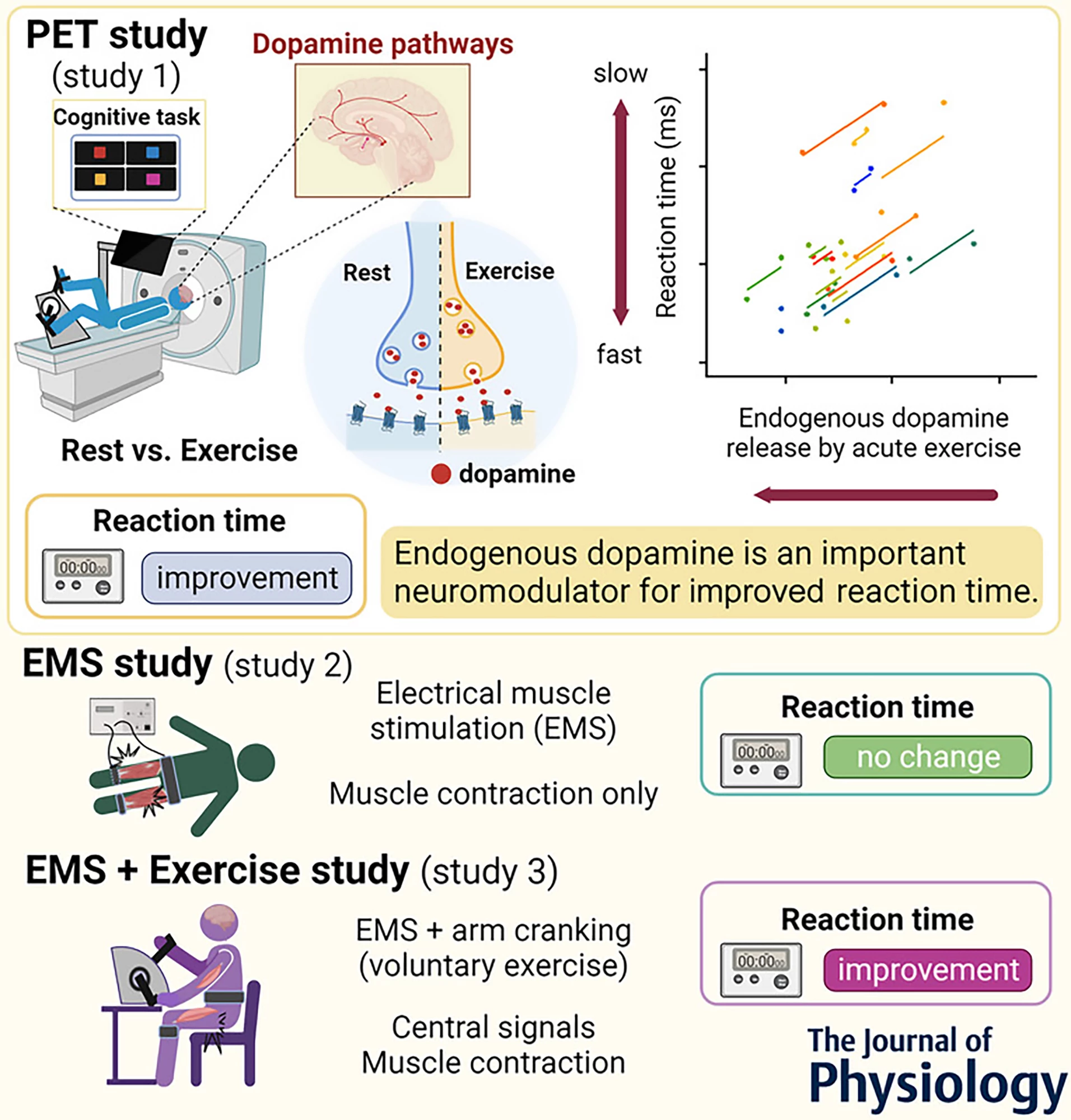Researchers have discovered why cognitive performance improves after exercise: the ‘feel good’ hormone and neurotransmitter dopamine. They found that exercise released dopamine, which produced a corresponding reduction in reaction time, and say that exercise could be an effective treatment for conditions such as depression, ADHD, and Parkinson’s disease, where dopamine plays a key role.
It’s well-known that exercise boosts cognitive functioning and performance, including reaction time. However, the exact physiological mechanism underlying this exercise-related improvement has remained ambiguous to date.
Now, a study led by researchers from the University of Portsmouth in the UK examining how acute physical exercise causes improved reaction times has provided an answer: dopamine.
“Using novel brain imaging techniques, we were able to examine the role dopamine plays in boosting brain function during exercise, and the results are really promising,” said Joe Costello, one of the study’s co-authors. “Our current study suggests the hormone is an important neuromodulator for improved reaction time.”
Dopamine is a neurotransmitter that’s commonly referred to as the ‘feel good’ hormone because of its role in pleasure, satisfaction, and motivation. Its dysregulation is associated with conditions such as Parkinson’s disease, depression, schizophrenia, addiction and ADHD. The researchers measured dopamine release in the brain using positron emission tomography (PET), which uses a radioactive drug called a tracer to track the metabolic and biochemical activity of cells in the body.
The researchers conducted three experiments. The first was designed to assess the effect of voluntary exercise on reaction time. Sixteen healthy males with an average age of 22 completed a cognitive task to measure reaction time and either cycled on an ergometer or rested while they underwent a PET scan. The second experiment tested whether involuntary exercise affected reaction time. Eighteen healthy males with an average age of 23 undertook the cognitive task either with or without electrical muscle stimulation (EMS). In the third experiment, 22 healthy males with an average age of 23 completed the cognitive task and a combination of EMS (involuntary) and exercise (voluntary) in the form of moderate or no-load arm cranking using a cycle ergometer.

The researchers observed that with voluntary exercise, reaction time decreased but didn’t change in the resting group. PET scans indicated that acute exercise released dopamine and that the degree of release didn’t differ between the left and right caudate and putamen, both dopamine pathway-rich areas of the brain. When exercise was involuntary – EMS alone – reaction time was not affected. Reaction time decreased when EMS was combined with moderate arm exercise but not when it was combined with no-load exercise.
“We wanted to remove voluntary muscle movement for part of the study to see if the process in which acute exercise improves cognitive performance is present during manufactured exercise,” said Soichi Ando, lead and co-corresponding author. “But our results indicate that the exercise has to be from the central signals of the brain, and not just the muscle itself. This suggests that when we tell our central command to move our body during a workout, that’s the process which helps the dopamine release in the brain.”
The researchers had previously studied the relationship between oxygen levels, cognitive performance and exercise to test the hypothesis that the more oxygen we breathe during a workout, the more ‘awake’ our brain is. They found no change in reaction time when cycling inside and outside an environment with low oxygen levels (hypoxia).
“These latest findings support our previous theory that cognitive performance during exercise is affected by changes to brain-regulating hormones, including dopamine,” Costello said. “There could also be a number of other psychophysiological factors, including cerebral blood flow, arousal and motivation, that play a part.”
Further studies are needed to fully understand the mechanism linking dopamine to cognitive performance following exercise.
The researchers also note some limitations to the current study, including its small sample size and that all participants were young males. Future studies should be larger and include a range of populations, including women and older adults, over a longer period.
Nonetheless, they say the findings suggest that prescribing exercise is a viable therapy for conditions where dopamine plays a key role, such as Parkinson’s disease, schizophrenia, ADHD, addiction, and depression.
The study was published in The Journal of Physiology.
Source: University of Portsmouth






